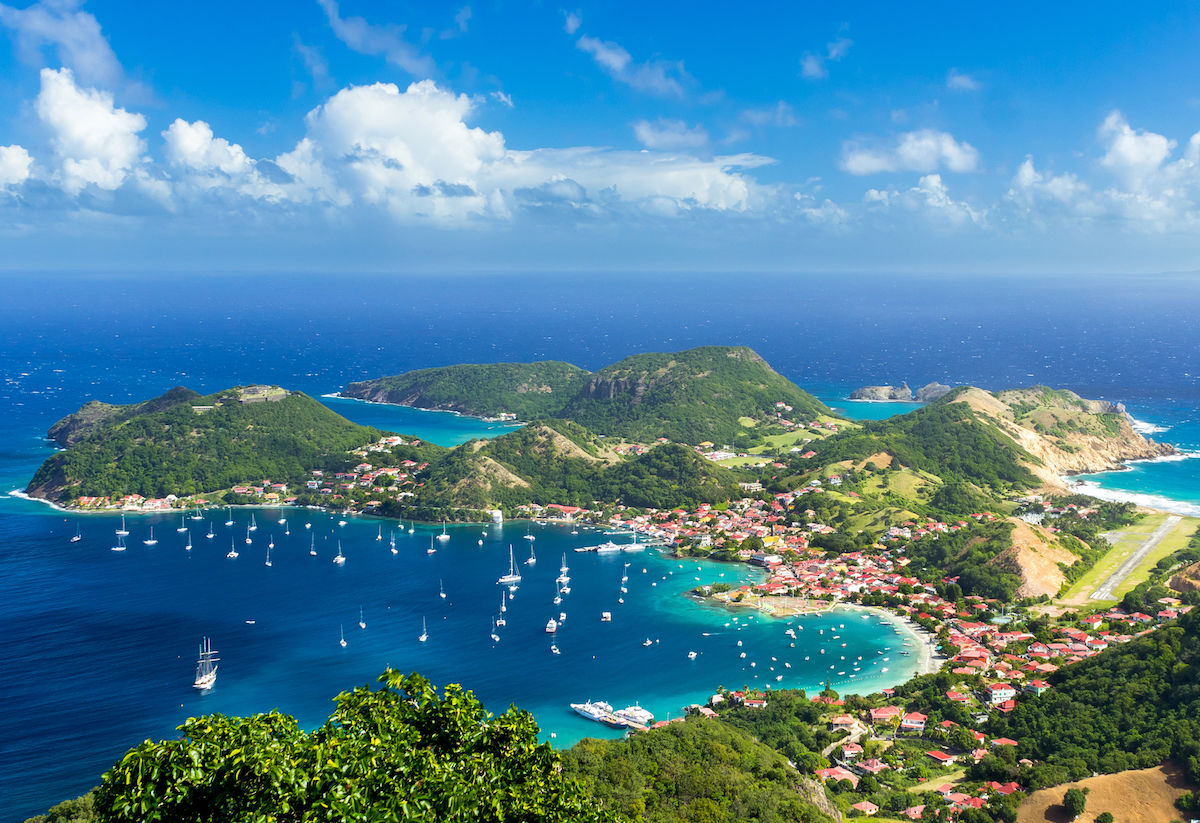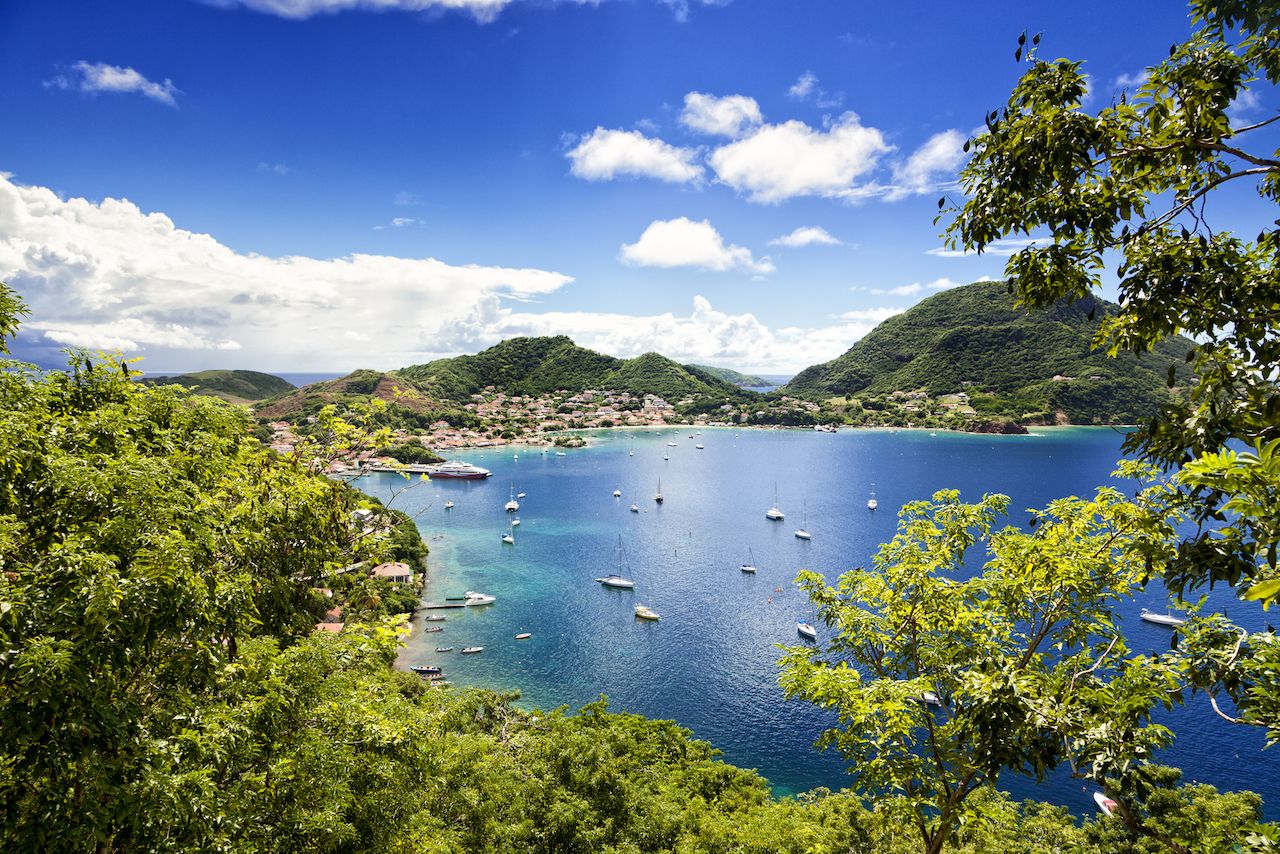Guadeloupe Conference Iran: Shaping History
The Stage is Set: Guadeloupe 1979
The choice of Guadeloupe, a picturesque French island situated where the northeastern Caribbean Sea meets the western Atlantic Ocean, for such a high-stakes summit was itself symbolic. Far removed from the political pressures and media glare of major capitals, it offered a discreet, informal setting conducive to candid discussions among world leaders. The Guadeloupe Conference was not a formal treaty negotiation or a public declaration of policy, but rather an informal meeting designed for a frank exchange of views on the most pressing global challenges of the moment. This informality allowed for a level of directness and strategic alignment that might have been difficult to achieve in a more structured forum. The very nature of the meeting underscored the urgency and the sensitive nature of the topics at hand, particularly the unfolding crisis in Iran.The Western Powers at the Helm
The four leaders present at the Guadeloupe Conference represented the core of Western power and influence during the Cold War era. Each arrived with their own national interests and strategic concerns, yet all shared a common objective: to maintain stability in a volatile world and protect their respective strategic interests.Jimmy Carter and the US Dilemma
For US President Jimmy Carter, the situation in Iran presented an immense dilemma. The Shah had been a staunch American ally for decades, a bulwark against Soviet expansion in the Middle East, and a key supplier of oil. However, his regime was increasingly seen as authoritarian and out of touch with the aspirations of its people. The United States found itself caught between supporting a long-standing ally and acknowledging the undeniable popular uprising. Declassified US diplomatic cables from the period reveal the growing concern within Washington about the Shah's ability to retain power and the potential implications of his downfall for American interests in the region. Carter's administration was grappling with the balance between human rights concerns and geopolitical realities, a tension that was acutely felt as the Iranian crisis deepened.European Perspectives: UK, France, and West Germany
Prime Minister James Callaghan of the United Kingdom, President Valéry Giscard d’Estaing of France, and Chancellor Helmut Schmidt of West Germany each brought distinct European perspectives to the table. For the UK, the decline of its imperial influence meant a greater reliance on its alliance with the US, but also a keen awareness of the economic implications of Middle Eastern instability, particularly concerning oil supplies. France, under Giscard d’Estaing, often pursued a more independent foreign policy, but shared concerns about regional stability and the future of energy markets. West Germany, still navigating its post-war identity, was a rising economic power heavily dependent on imported oil, making the Iranian crisis a matter of profound economic security. The discussions among these leaders, as detailed in reports based on newly declassified US diplomatic cables, highlighted the complex interplay of national interests and collective Western strategy. The common thread was a shared apprehension about the potential for chaos and the spread of anti-Western sentiment if the Iranian situation spiraled out of control.Iran on the Eve of Revolution
To fully grasp the significance of the Guadeloupe Conference Iran, one must understand the dire situation within Iran itself on the eve of the summit. By late 1978 and early 1979, the Islamic Revolution was in full swing. Schools and universities were closed, paralyzing the educational system. Strikes had broken out across the country, crippling the economy and vital services, including the oil industry. Millions had taken to the streets, demanding the overthrow of the Pahlavi dynasty and the return of Ayatollah Ruhollah Khomeini from exile. The Shah's government was losing control, with military defections and a rapidly eroding base of support. The scale and intensity of the protests, coupled with the organizational prowess of the revolutionary movement, made it clear that the Shah's position was becoming untenable. The Western leaders at Guadeloupe were faced with a stark reality: the Shah's regime was collapsing, and a new, unpredictable force was poised to take power. This research, aimed at the impact of the Guadeloupe Conference on the revolution in Iran with an emphasis on educational issues, underscores the widespread disruption that had already occurred, setting the stage for the conference's crucial deliberations.The Deliberations and the Shah's Fate
The core of the discussions at the Guadeloupe Conference regarding Iran revolved around the recognition that the Shah's rule was no longer sustainable. Despite past support for the Pahlavi dynasty, the Western leaders, confronted with the overwhelming evidence of a popular uprising and the Shah's inability to suppress it, concluded that his departure was inevitable and, perhaps, even desirable for a less violent transition. The leaders at the Guadeloupe Conference suggested that Shah Mohammad Reza Pahlavi leave Iran as early as possible. This was a monumental shift in Western policy, effectively withdrawing crucial international backing from a long-standing ally. The decision was not made lightly. It involved weighing the risks of a power vacuum against the dangers of continued support for a regime that had lost legitimacy. The declassified documents reveal the pragmatism that guided these discussions: the goal was to manage the transition in a way that minimized instability and protected Western interests, even if it meant sacrificing a once-trusted partner. The consensus reached was that the Shah's continued presence only fueled the revolutionary fire, and his departure might offer a chance for a more orderly, albeit uncertain, future for Iran. This pivotal recommendation from the Guadeloupe Conference Iran marked a turning point in the Iranian Revolution.The Immediate Aftermath and the Shah's Exile
The impact of the Guadeloupe Conference was almost immediate and undeniably profound. Following the meeting, domestic protests and opposition to the Pahlavi dynasty intensified. The implicit message from the Western powers – that the Shah no longer had their full, unequivocal support – emboldened the opposition and further demoralized the Shah's loyalists. The international community's shift in stance sent a clear signal that the end was near for the monarchy. After the conference ended, the Shah's regime collapsed with startling speed. On January 16, 1979, just nine days after the Guadeloupe Conference concluded, Shah Mohammad Reza Pahlavi left Iran for exile, marking the end of the Pahlavi dynasty and centuries of monarchical rule in Iran. His departure was met with jubilation by millions of Iranians and paved the way for Ayatollah Khomeini's triumphant return from exile on February 1, 1979, and the subsequent establishment of the Islamic Republic of Iran. The speed of these events underscored the direct influence of the Guadeloupe Conference on the final outcome of the revolution. The conference did not cause the revolution, but it certainly accelerated the Shah's departure and shaped the immediate trajectory of events.Long-Term Impact and Geopolitical Ramifications
The legacy of the Guadeloupe Conference Iran extends far beyond the immediate events of January 1979. Its decisions had profound and lasting consequences for Iran, the Middle East, and global geopolitics.The Rise of the Islamic Republic
The most direct consequence was the swift and decisive establishment of the Islamic Republic of Iran. The departure of the Shah created a vacuum that was quickly filled by the revolutionary forces led by Ayatollah Khomeini. This marked a fundamental shift in Iran's political, social, and international orientation. From being a staunch Western ally, Iran transformed into an anti-Western, revolutionary state, profoundly impacting regional alliances and global power dynamics. The new regime's ideology and foreign policy would challenge the existing international order for decades to come.A Shift in Regional Dynamics
The fall of the Shah and the rise of the Islamic Republic fundamentally altered the balance of power in the Middle East. Iran's shift from a pro-Western monarchy to an anti-Western Islamic republic created new fault lines and rivalries, particularly with Saudi Arabia and other Gulf states. It also emboldened various Islamist movements across the region and led to increased proxy conflicts. The ramifications of this shift are still felt today, influencing conflicts and alliances across the Middle East and beyond. The Guadeloupe Conference, by effectively signaling the end of Western support for the Shah, inadvertently contributed to this monumental geopolitical rearrangement.The Guadeloupe Conference in Historical Context
The Guadeloupe Conference serves as a critical case study in the complexities of international relations and the challenges of managing geopolitical crises. It highlights the difficult choices leaders face when long-standing alliances clash with popular movements and the need for pragmatic decision-making in the face of irreversible change. The information derived from declassified US diplomatic cables and other historical documents provides invaluable insight into the thinking of Western leaders at a pivotal moment. Researchers continue to analyze the conference's impact, with some studies, like those focusing on educational issues during the revolution, using the document library method to obtain primary information, even if the documents at hand are not always sufficient to fully capture every nuance. The conference is a testament to the fact that even informal gatherings of powerful individuals can have far-reaching and unintended consequences, shaping the destinies of nations. It underscores the delicate balance between intervention and non-intervention, and the often-unpredictable outcomes of such high-stakes diplomatic maneuvers.Lessons Learned from the Guadeloupe Conference Iran
The Guadeloupe Conference Iran offers several crucial lessons for understanding international relations and crisis management. Firstly, it demonstrates the limits of external support for a regime that has lost its domestic legitimacy. Even the combined might of the Western powers could not sustain the Shah's rule once the Iranian people had decisively turned against him. Secondly, it highlights the importance of timely and realistic assessments of evolving political landscapes. The Western leaders, by acknowledging the Shah's inevitable departure, attempted to manage a transition rather than resist it, though the ultimate outcome was still largely beyond their control. Thirdly, the conference underscores the profound and often unforeseen consequences of geopolitical decisions. While the leaders at Guadeloupe sought to minimize instability, their actions ultimately contributed to a revolutionary outcome that reshaped the Middle East for decades. The events surrounding the Guadeloupe Conference and the Iranian Revolution serve as a powerful reminder of the intricate interplay between domestic politics and international diplomacy, and how seemingly distant decisions can have monumental impacts on global affairs. In conclusion, the Guadeloupe Conference was far more than a casual gathering of world leaders on a tropical island. It was a crucible of decision-making that directly influenced the final act of the Iranian monarchy and ushered in a new era for Iran and the Middle East. The discussions held there, the consensus reached regarding the Shah's future, and the subsequent events that unfolded in Tehran underscore the conference's indelible mark on history. Understanding this pivotal moment is essential for anyone seeking to comprehend the origins of modern Iran and the complex geopolitical landscape of the 21st century. We invite you to share your thoughts on the enduring legacy of the Guadeloupe Conference in the comments below, or explore other articles on our site that delve deeper into the historical events that shaped our world.- Paris Jackson Mother Debbie Rowe
- Hubflix Hindi
- Downloadhubcontect
- Is Jonathan Roumie Married
- Lil Jeff Kills

Guadeloupe best Caribbean island, best things to do in Guadeloupe

Guadeloupe Best Caribbean Island, Best Things to Do in Guadeloupe

Tourisme Guadeloupe : vivez des expériences uniques en 2025